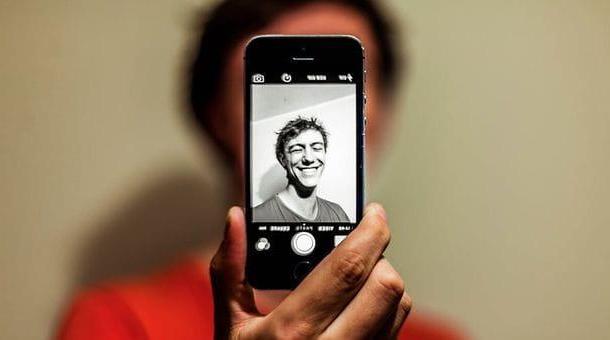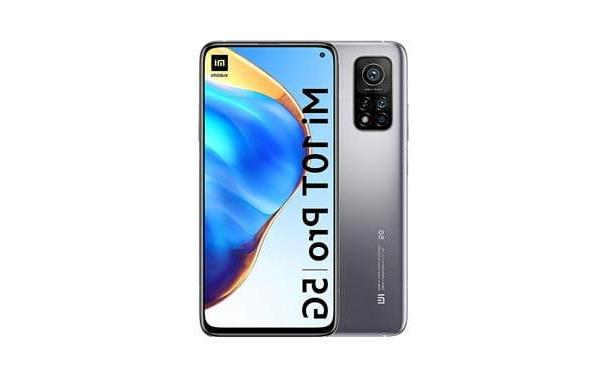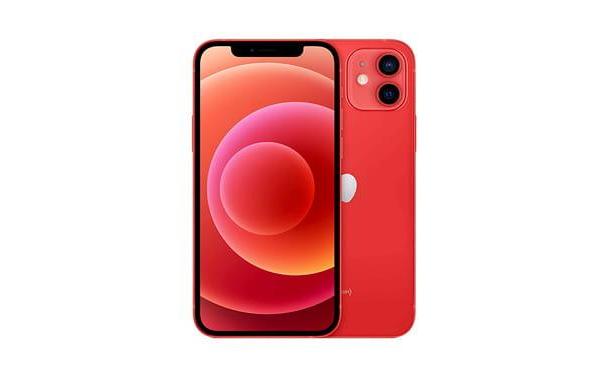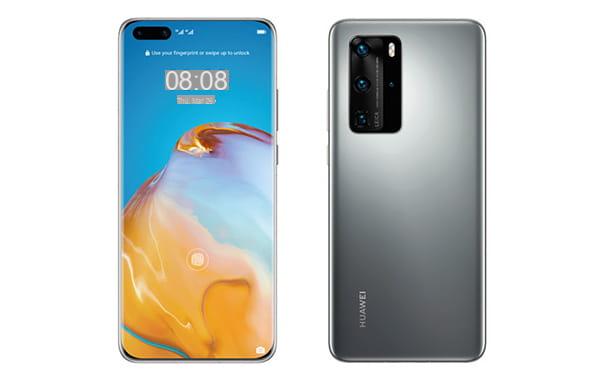The best camera is the one you always have with you. How many times have you read this sentence? I bet a myriad. And in fact it is true: the most useful and effective camera is the one we have with us when we find ourselves, perhaps unexpectedly in front of a breathtaking panorama, we are together with our loved ones during a vacation day or we witness a scene that reveals itself. be memorable. But who is it that nowadays, apart from enthusiasts and professionals in the sector, always goes around with a camera in their pocket? Nobody. We all, however, always have one with us smartphone.
This is the reason why I'm here today and I want to give you some advice on how to choose a smartphone with a good photographic sector, therefore a good supply of cameras, thanks to which you can take good quality photos and videos and be able to "immortalize" any scene in the best way. Best of the ways for what concerns the smartphone area of course: reflex and mirrorless still remain on another planet as regards the quality of the shots.
Unfortunately - I'll tell you right away - i your phone more advanced are also the more expensive ones, but don't worry: even in the intermediate price ranges you can find devices that guarantee more than good photographic performance. Furthermore, by purchasing previous models of the current top-of-the-range smartphones, it is possible to take home the “smartphone gentlemen” by spending much more than reasonable amounts. If you want to deepen the subject and you want to find out which is the best smartphone camera for your budget, read on.
How to evaluate a smartphone camera

Evaluating the cameras of a smartphone from a distance is a rather complex operation. The ideal would be to have the device in your hands and test it in the typical conditions in which smartphones and cameras are tested.
- Photos in good lighting conditions
- Photos in low light conditions
- Photo with zoom
- Macro
- Photo with bokeh effect
- Video (standard, animated and in different lighting conditions)
In the absence of this possibility, the best thing to do is to rely on online reviews and look for focus on the photographic compartments of smartphones, in order to obtain detailed information on parameters such as exposure, contrast, color rendering, blur, focus speed, level of detail, presence of noise and artifacts and flash performance.
Another thing that can help you understand the real photographic quality of a smartphone is to go and look sample photos and videos which can be found in support of the online reviews.
Among the best sites that deal with smartphones and especially cameras included in smartphones, I point out DxOMark which publishes constantly updated rankings of the best camera phones and in-depth reviews of the latter. His judgments should not be taken at face value (like the judgments of any other site), but he is certainly one of the main reference points in the sector: I also consulted him to create this buying guide and compare my opinions, my experiences in the field with various camera phones, with those of the most recognized experts in the international arena.
Sensor and resolution (Megapixel)
To evaluate the qualities of a camera you need to carefully analyze the quality and size of the sensor. To simplify the concept as much as possible, we can say that the sensor is a silicon rectangle equipped with photodiodes that communicates with the other components of the camera in order to make it possible to capture photos and videos. THE photodiodes, which are arranged like a chessboard on the sensor, are light-sensitive devices that, by intercepting the wavelength of the light collected by the lens, generate an electric charge and transform the light into digital data. They are covered by a grid with many color filters, each of which is related to one of the three primary colors: red, green and blue. This is because the photodiodes themselves "see" in black and white and therefore would not be able to generate a color image.
When the sensor translates light into data, an image made up of many dots is obtained. These points are defined pixel (abbreviation of Picture Element) and each of them represents a small piece of information of the great "mosaic" that makes up the final image. Multiplying the number of pixels that make up the horizontal side of the image by the number of pixels that make up the vertical side, we get the number of Megapixels, that is, of the millions of pixels that make up the image. Hence the definition "X Megapixel camera" commonly found in advertisements or smartphone data sheets. But be careful not to fall into the marketing trap: a camera with a greater number of megapixels does not necessarily produce better images than one with less megapixels, it simply produces "bigger" images.

To affect the actual quality of the images there are also many other elements, first and foremost the sensor size (which are expressed in Millimeters). If a small sensor contains many megapixels, it contains many photodiodes, but small photodiodes, which are capable of capturing only a small amount of light. This results in an increase in noise, therefore in an increase in the noise elements in the final image. Much better to have a larger sensor, therefore with larger photodiodes, capable of capturing more light and reducing the noise present in the final images.
Among the leading manufacturers of photo sensors for smartphones are Sony, which manufactures some of the most advanced components in the industry, OmniVision e Samsung. In any case, it is better not to give too much importance to the "brand" and focus on the quality of each individual sensor.
Another thing to know is that camera sensors can be of various types. The most popular in the smartphone field are those CMOS which are very compact, consume little energy and, although they are potentially more susceptible to "noise" than other types of sensors (eg. CCDs), include extra components that allow you to still get excellent shots.
In the specifications of some smartphones, you will find that their pixels measure a certain amount of µm. By pixel size, in reality, we mean the size of the photosite (o fotosito), which is the space of the sensor in which the photodiodes and the electronics that power the latter are contained and allows to convert the light into digital data. Their unit of measurement is the micrometer (µm), which corresponds to one millionth of a meter. Pixel, or rather, larger photosites allow you to capture more light and therefore to have better photos and videos in low light conditions.
Video resolution and framerate
We have already talked about the resolution of the photos and the much talked about Megapixels. As for the videoInstead, two parameters must be taken into account: the resolution, which is given by the number of pixels that make up the video frames and the framerate, that is the number of frames reproduced for each second of video.
On the resolution there is not much to say: as long as the camera sensor is large enough and of good quality, a higher resolution of the video equates to greater sharpness and greater detail of the images contained in it. The most popular resolutions for videos are that HD (1280 x 720 pixels), That Full HD (1920 x 1080 pixels) is that UltraHD/4K (3840 x 2160 pixel). As can be easily understood, a higher resolution also equates to a greater "heaviness" of the video on the smartphone memory.
Il framerate, as mentioned, it measures the number of frames, that is, of frames, which are played for each second of video. The most popular framerates are 24, 30 e 60 FPS and, obviously, a higher framerate corresponds to a greater fluidity of the videos displayed. Over 60 FPS, with values of 120 or 240 FPS, you can make videos in slow motion. Typically, 4K videos are shot at 30 FPS while Full HD and HD videos at higher framerates, such as 60 FPS.
Opening the diaphragm
By now it should be clear: the final quality of a shot has a decisive influence on the amount of light that passes through the lens and impresses the sensor during exposure. In this regard, it is important to know the value of aperture opening on which depends, precisely, the amount of light that manages to reach the objective.

To find out what the aperture of a camera is, you have to look at the value of the f / stop. The f / stops express the relationship between the focal length of the lens and the aperture diameter of the diaphragm. There focal length, in case you don't know, is the distance between the sensor surface and the center of the objective lens when it is set to focus at infinity. It is measured in mm and can be normal, the wide angle (with a lower focal length than the normal lens, it allows you to capture very large scenarios) or of type zoom / telephoto (with a focal length greater than the normal lens to magnify the framed objects). Unfortunately, in the smartphone specifications it is almost never indicated clearly.
Returning to f / stops: in order not to get too technical, we can say that to a smaller number of f / stop (where instead of “stop” there is a variable figure) equates to a greater amount of light entering the lens, therefore a greater chance of obtaining good shots in low light conditions. To give a practical example, with an opening of f / 2 you can get sharper shots in low light conditions rather than at an aperture of f / 2.8 (as a smaller number of f / stops equals a larger aperture).
The light entering the lens, however, is not the only parameter that f / stops affect. The f / stops also affect the depth of field, then on the portion of the photo that is in focus compared to the rest. For this feature, the opposite concept of the amount of light captured is valid: the higher the number of f / stops, the more you can focus on larger areas of the framed scene.
Generally speaking, we can say that f / stops up to f / 8 are suitable for taking photos with foreground subjects in focus and slightly blurred backgrounds; f / stops f / 8 and f / 11 are suitable for generic photos in which everything must be in focus, while f / stops above f / 11 are suitable for more "panoramic" photos, in which there are subjects in the first place plan, intermediate elements and backgrounds to keep all in focus at the same time.
optics
Before buying a camera phone, it would also be good to inquire about its characteristics optics, therefore on the number, size and quality of lenses with which it is equipped.
To be of good quality, a camera lens must be scratch resistant and must not present problems such as, for example, thechromatic aberration (colored halos around the subjects of the images) and the flare (reflections in the shape of polygons or lines that are present mainly within the photos taken against the light).
As for the resistance to bumps and scratches, the most advanced smartphones offer a coating in sapphire crystal which allows you to keep the lenses intact even in the event of a collision with hard surfaces. As for effects such as flare or chromatic aberration, just look for lenses with a good one anti-glare system. Finally, the number of lenses in a smartphone can be variable: the top of the range can also contain five or six.

Autofocus
To capture the moment clearly, without blur, it is essential that the camera has a good system of auto focus (the so-called autofocus). There are three most popular focusing systems currently in the smartphone field.
- Contrast detection - is the most basic focusing system, found in most smartphones. It works like this: the camera examines the scene from the closest to the most distant points, the microprocessor analyzes the point with the greatest difference in contrast, that is, with the greatest difference between "white" and "black" and from this analysis it understands which it is the point of the frame to focus on. It is not very fast, it also struggles in low light conditions and with backgrounds that are too uniform.
- Phase Detection (Phase Search System) - it is a focusing system found on DSLR cameras. It makes use of mirrors to capture the light: the light enters the lens, hits the mirror and is deflected on a series of sensors that represent the various focus points and are arranged in pairs, in fact they acquire two different versions of the same image , then compare them and thus bring to an optimal focus in a few moments. In smartphones, a variant of the phase search system is used which does not involve the use of mirrors. Instead, it involves comparing the light passing through the openings on opposite sides of the lenses. It's faster and more accurate than the contrast system, but it also suffers in low light and overly smooth backgrounds.
- Dual Pixel - it is an evolution of the Phase Detection system that ensures greater speed and greater accuracy. The difference is that, while the Phase Detection technology involves the use of a small percentage of photodiodes (therefore pixels) of the sensor for focusing, the Dual Pixel technology involves the use of two photodiodes for each single pixel. . This means that instead of having a focus through 5-10% of the pixels of the sensor, you have a focus that uses 100% of the photodiodes.
- Laser focus - in this system, focusing takes place by calculating the return time of a laser (usually placed next to the camera) which is reflected on the subjects to be framed. It's lightning fast, but it can get into trouble if you try to frame a transparent surface or a subject that's too far away.
Flash
Many cameras “suffer” in low light conditions. This is where the flash, which can give a great hand in making good quality shots and videos by illuminating those scenes that, without its support, would be too dark. The flashes built into smartphone cameras can be of various types.
- LED - it is the most common type of flash in the smartphone field. It ensures excellent energy efficiency and a good degree of illumination of the subjects to be framed. It is also very fast.
- Dual LED (o dual tone) - as the name can easily understand, it is a system that involves the use of two LEDs instead of one. It can emit twice as much light as single LED systems and can illuminate subjects 1.4 times farther. Usually the two LEDs are of different shades - one white and one amber - to obtain photos with more natural colors (automatically optimized according to the ambient light).
- Quad LED - is a further evolution of LED systems in which four LEDs are used to ensure greater illumination of the framed scenes and better color rendering.
- Xenon - it is a type of flash opposed to the LED one that works through a small glass tube full of xenon gas. It emits white light. It tends to offer a greater degree of illumination and illuminates at a greater distance than LED flashes, but it requires a lot of energy and this has led to very few manufacturers adopting it.
If you are a selfie fanatic, check that the smartphone you are interested in has a front flash or a flash function for selfies included in the screen (such as iPhone, which “fires” a flash from the screen when taking selfies).
Stabilizer

Shaky photos and videos are among the main nightmares of photography enthusiasts. To avoid them, you need to buy a smartphone with a good stabilization system.
The best stabilization system is the one guaranteed by optical stabilizer (OIS) which mechanically acts on the camera optics in order to balance the movements made to the user and avoid, precisely, the blur effect in photos and videos.
A step below, both in terms of effectiveness and usefulness, there is electronic stabilizer (EIS) which acts at the software level to correct the blur in videos and photos. Its operation requires that a portion of the photographic sensor is used to record information useful for correcting blurred scenes, but the results are not even remotely comparable to those of the optical stabilizer.
Zoom
For the zoom we can do the same thing as with the stabilizer. Could be optical o digital. The optical one is to be preferred over the digital one as it acts mechanically on the camera optics and therefore allows for an enlargement of the frame without graininess or blurring. Digital zoom, on the other hand, processes the image at the software level and thus leads to a magnification full of visual imperfections and with a poor level of detail.
Some smartphones have two or more rear and / or front cameras which, depending on the choices of the manufacturers, allow you to take shots with various fields of view (with optical zoom or wide-angle shooting), take shots with greater definition and more.
Not only because there are now many brands that have decided to introduce the so-called "Periscope" which brings back knowledge of submarines. In this case you will know that the periscope is nothing more than a tube with two 45 degree lenses mounted on both ends - you look into one and you can see the reflected image from the other end. On smartphones, a periscope lens uses the same principle, but with only one mirror, to bend the light 90 degrees. There is a conventional zoom lens, which requires all elements to adapt to the depth of the smartphone while on the other side, there is a periscope lens, which allows you to greatly increase the length of the lens, since the depth of the phone would no longer be a problem.
Multiple camera

As just mentioned, some smartphone models are equipped with two or more rear and / or front cameras which, depending on the choices made by the manufacturer, can offer different functions and characteristics.
For example many smartphones use multiple cameras to provide one optical zoom and create photo with bokeh effect (therefore with a blurred background), or to create wide-angle shots. Some models use a black and white sensor and a color sensor which, combined, allow you to capture a greater amount of details and lights in the framed scenes, while there are also devices with modules dedicated to very close photographs (macro).
Even here, however, the speech made for megapixels applies: don't be fooled by the numbers, because a smartphone with multiple cameras doesn't necessarily take better photos than smartphones that have only one camera. An example of this are Google's Pixels which, with a single rear camera and the power of software processing developed by the Mountain View giant, beat it on a par with smartphones that have at least two rear cameras.
Software functions and other features

Camera phones don't all offer the same functionality. In addition to the "mechanics", therefore, you must also analyze theirs software and identify those that offer the functions that seem most congenial to the use you make (or intend to do) of the smartphone camera.
Among the most important functions that camera phones can offer, we find the face/smile detection which allows the camera to automatically recognize faces and smiles to improve focus; L'HDR (High Dynamic Range) automatico which allows you to create photos with a wide range of lights and shadows by capturing different versions of the same scene (one underexposed, one at medium exposure and one overexposed); the function panorama to create panoramic photos automatically (you scroll the smartphone and it automatically "pastes" various photos in order to obtain a long panoramic image) and the portrait function, which is typical of devices with dual rear cameras and allows you to create shots with subjects in focus and blurred background (bokeh effect). On some devices the front camera can also be used to unlock the phone via face recognition (which in this case occurs two-dimensionally), while there are models that use an array of sensors (for example iPhones) to create a mapping of the three-dimensional face and guaranteeing an unlock in total safety, using only the gaze.
Also, I recommend that you check that the camera software present on the smartphone allows you to take photos in RAW and to manually modify parameters such as ISO sensitivity (which allows you to adjust the light level of the shots); there shutter speed; the white level; the color tone focus and more. If you are not a "point-and-shoot" lover or in any case you do not want to preclude the possibility of granularly adjusting the settings of your shots, you need flexible and powerful camera software (although, it must be said, there is no shortage of third-party apps that can adequately compensate for any shortcomings of the default camera software installed on the phone).
Another feature to check is that relating to audio recording quality in the videos. If the microphone of the smartphone is not of good quality, the audio recording does not take place clearly and you will get videos with a compromised sound quality.
Finally, do not forget about the rest of the hardware and software features of the phone such as, for example, the screen, the processor (which can heavily affect the result of a shot), the RAM, the internal memory and the operating system. L'artificial intelligence which many manufacturers celebrate and which, according to their proclamations, should automatically increase the quality of the shots by adjusting the camera settings according to the scenes captured, is often marginal. Don't be fooled by marketing and choose your next camera phone based on all its functions and features, not because it has an alleged "artificial intelligence" capable of magically improving the photos (in some cases it really helps a little, but it almost never makes a difference as the manufacturers say).
If you don't know how to evaluate all these specifications or in any case you want to know more, take a look at my tutorial on how to choose a smartphone in which I have shown you, in detail, what are the main features that you need to analyze before buying a smartphone. I bet you will find that reading very useful too.
Which camera phone to buy
At this point you should have quite clear ideas on how to evaluate the characteristics of a camera phone. Did I say it right? Perfect, then let's not get lost in chatter anymore and let's try to find out, together, what is the best smartphone camera for your needs (as well as for your budget).
Best budget smartphone camera (max 200 euros)
Redmi Note 10

Under 200 euros it is not easy to find smartphones with noteworthy cameras, I warn you immediately, for the models I propose they can guarantee an excellent point-and-shoot experience. For example there is the Redmi Note 10, of Xiaomi: what does it offer? Meanwhile, an excellent construction that you will find immediately once you pick up the smartphone. And then for the first time in the Redmi Note series comes a display with a 120 Hz refresh and a 6,67-inch AMOLED screen with Full HD + resolution (1080 x 2400 pixels) and HDR 10 support. Inside there is a Snapdragon processor. 732G with memory sizes to choose from: 6-64GB, 6-128GB and 8-128GB. The RAM is of the LPDDR4X type while the storage, which can be expanded with microSD up to 512 GB, is of the UFS 2.2 type. The audio sector is also good thanks to a double speaker, while the battery has a capacity of 5.020 mAh, supported by fast charging at 33 watts. Finally, the photographic sector can count on a quadruple rear camera with the main 108 megapixel camera, then an 8 megapixel ultra wide angle secondary, 5 megapixel (f / 2.4) telemacro sensor and 2 megapixel (f / 2.4) depth sensor.
Vedi offers your AmazonLITTLE X3

There is also LITTLE X3 always produced by Xiaomi but with an excellent quality and price ratio. Meanwhile, here you will find the photographic sector of excellent quality even if in this price range: the main camera is 64MP which is accompanied by a 13MP ultra wide-angle cam and two 2MP sensors for depth and macro photos. For the rest we find a 6.67 "LCD type display but with refresh rate even at 120Hz. So a Snapdragon 732G processor characterized by a particular cooling system because LiquidCool with cooling chamber in copper and graphite. The memory here is from 6 GB with storage in double version of 64 or 128GB And then the important battery of 5.160 mAh for a long duration but above all with fast charging at 33W.
Vedi offers your AmazonHuawei P40 Lite

Not only enviable cameras but also the use of the 5G network at a still very affordable price. In this case I am talking about an excellent Huawei P40 Lite that you certainly cannot fail to consider among the smartphones with the best camera. In fact, it is known that Huawei has long been making highly professional devices from this point of view and here it places Not one, not two and not three but 4 photographic sensors to be exploited at the rear. It starts with the 48 MP main one, continuing with an 8 MP ultra-wide-angle secondary and then two more 2MP sensors for macros and depth. Clearly there is not only the photographic sector but also a powerful processor such as the Kirin 810 which is helped in the operations by 6 GB of RAM or even 8 GB of RAM with a storage space equal to 128GB expandable. The display is an excellent quality 6.4 "LCD with Full HD + resolution while the operating system is characterized by HMS or Huawei services.
Vedi offers your AmazonBest mid-range smartphone camera (200-500 euros)
Google Pixel 4a [BEST BUY!]

I could not forget in this price range the Google Pixel 4a which for many is considered as the best mid-range camera phone, despite having only one module at the rear unlike almost all other models. How do you manage to achieve excellent results? Google uses its algorithm and allows only the 12.2MP camera with a 28mm lens to achieve results comparable to other smartphones of this price with only the artificial intelligence system. And you will also be able to record videos in 4K without problems and in good quality. Only at a long distance does he suffer a little compared to the others but he still manages to defend himself for what he can. The rest is to be considered a very strong smartphone compactness with a small 5.81 "Full HD + display and with a processor still optimal for all classic operations which is the Snapdragon 730G. A really interesting device that you can order on the official store.
Apple iPhone SE (2020)

Then I can not recommend the compact iPhone par excellence, the latest iPhone SE (2020) which unlike the other iPhones in the Apple catalog still maintains a classic display with double band (upper and lower) and with a single camera at the rear. But why do I recommend it? Because Apple has significantly improved the photographic sensor and actually at these prices it is a device that can still have its say. The single sensor at the rear is a 12MP with f / 1.8 lens but with OIS and this allows it not only to take quality photos but also to record videos up to 4K resolution at 60fps. And then the display, albeit small from 4.7 inches, is excellent but with the presence of the Touch ID which for many is even more comfortable than unlocking with face detection. Finally, the processor is a reliable Apple A13 Bionic with three different non-expandable 64/128 / 256GB memory sizes. Finally, the Apple ecosystem with its applications, its interactions with other Apple devices and the longevity of the iPhone.
Vedi offers your AmazonOnePlus NORD [BEST BUY!]

In this price range OnePlus North it is still a smartphone to buy because it not only has an excellent hardware sector and a youthful design and in step with the times but above all because it has a significant photographic sector with many quality sensors. But let's see then what you can find in him. Meanwhile, an excellent processor which is the Snapdragon 765G with 6 or 8 or even 12 GB of RAM and a non-expandable 256GB memory cut. And then the photographic sector with a 48 MP main cam, then an 8 MP ultra wide angle and two more excellent 5MP sensors for macros and a 2MP for bokeh. There is also a 6.44-inch AMOLED-type display with 90Hz refresh rate.
Vedi offers your AmazonXiaomi Mi 10T Pro

Xiaomi Mi 10T Pro I could not recommend it. Here there is a lot of power to be exploited both in terms of hardware and photographic sector. And let's start from this since Xiaomi places a 108 MP main sensor with Super Pixel technology and optical image stabilization. Then a second 13 MP ultra wide-angle sensor which is also associated with a 5MP macro sensor for close-up shots. Clearly excellent videos that can reach 4K are also excellent. The rest sees a large 6.67 "display with IPS LCD technology and 144Hz refresh rate. Then a latest generation Snapdragon 865 processor with 8 GB of RAM and 128 or 256GB UFS 3.1 storage. Finally, the 5.000 mAh battery with really good autonomies.
Vedi offers your AmazonOPPO Find X3 Lite

There is also OPPO Find X3 Lite which I like mainly for how it takes pictures but also for its very youthful design in colors and clearly also for its technical specifications. Meanwhile, at a photographic level, here you will find a device with a 64MP main cam at the rear that will be flanked by an excellent 8MP ultra wide-angle and then two 2MP sensors for macros and blur effects. OPPO has improved a lot in the field of photography and this Find X3 Lite is an example with the possibility of recording in 4K as well as editing videos directly from the smartphone. This is also thanks to the presence of the excellent Qualcomm Snapdragon 765G processor but also thanks to 8 GB of RAM. Data storage is not a problem with 128GB storage as well as content viewing thanks to the large 6.43-inch AMOLED display and Full HD + resolution (90Hz refresh rate). Finally, the battery which is not only 4.300mah but also has a 2.0W SuperVOOC 65 fast charge.
Vedi offers your AmazonLenovo Motorola Edge 5G

If we talk about the photographic sector it is inevitable not to suggest the original as well Motorola Edge 5G. I say original not so much for the presence of multiple photographic sensors that will allow you to take high-quality photos and videos but for the presence of a unique design with a display with extremely angled sides to give a premium appearance but also comfortable in use. Inside you will find the Snapdragon 765G which also supports 5G network and is aided by 6GB of RAM and 128GB of expandable memory. For the photographic sector there is a main one from 64MP then a 16MP ultra wide-angle sensor and then again a third sensor for the 8MP zoom and a fourth for the TOF 3D depth. The battery is 4.500 mAh with fast charging with the included adapter. The display? Here there is, as mentioned, an endless 6.7-inch AMOLED-type panel with Full HD + resolution and 90-degree angles to maximize viewing.
Vedi offers your AmazonSamsung Galaxy A52 5G

If you don't want to spend too much there is also the Samsung Galaxy A52 5G which in addition to having an excellent compromise in terms of cameras allows you to have mind-boggling autonomies. Meanwhile, know that the photographic sensors on the rear are 4 and they see the main 64MP (f / 1.8) with OIS, a 12MP ultra wide angle (f / 2.2) as well as a macro and a depth sensor both of 5MP for photos close together and for those out of focus. All allow you to record up to 4K without problems with excellent quality thanks to stabilization. The battery is excellent from 4.500 mAh and allows you to get there in the evening with a large margin of remaining charge. Then there is still a 6.5-inch display of excellent quality because AMOLED is capable of intense colors but also of reduced frames as well as a 90Hz refresh. Finally, the processor is a Snapdragon 720G with 6GB of RAM and 128GB of storage.
Vedi offers your Amazonrealme 8 Pro [BEST BUY!]

realme 8 pro it is a mid-range smartphone that focuses heavily on the photographic sector and on the low price. And starting from the camera, know that at the rear of this device you will find a quad camera with a 2 MP Samsung ISOCELL HM108 main sensor, accompanied by ultra-wide-angle, macro and black and white portrait sensors. There is a single 16MP camera at the front. The display is a 6,43-inch Super AMOLED at Full HD + resolution with 60 Hz refresh rate and integrated fingerprint sensor. The processor is a Qualcomm Snapdragon 720G octa core, which can count on the help of 6 or 8 GB of RAM and 128 GB of internal memory. Present 4G dual SIM dual standby connectivity, Wi-Fi ac, Bluetooth 5.0. The battery is 4500 mAh, with support for fast charging up to 50 W. For all other details you can consult the complete technical data sheet. For more details, read my realme 8 Pro review.
Vedi offers your AmazonMigliore photocamera smartphone di fascia alta (oltre 600 euro)
iPhone 12 Pro/Pro Max[TOP!]

If you want the most from the cameras of a smartphone, you cannot fail to consider the real top of the range of the Apple house, that is iPhone 12 Pro and Pro Max who see few differences between them on a photographic level but they are undoubtedly the best you can find on the market. In the meantime, let's start by explaining which photographic sensors they have. iPhone 12 Pro meanwhile sees the presence of a system of three 12MP cameras all but with different tasks: a wide angle, an ultra wide angle and a telephoto lens that will differ from that of the Pro Max for the presence of an optical zoom up to 5 × and not 2 × (as with the normal Pro). Moreover for the Max there will be a sensor from f / 2.2 and not f / 2.0 as in the iPhone 12 Pro. In addition to this iPhone 12 Pro sees the presence of a 6.1-inch display with Super Retina XDR of 460PPI OLED type. The Max version instead has a 6.7-inch Super Retina XDR but with 458PPI. Both are flush with the body and both have True Tone. The processor, on the other hand, does not change and is the powerful A14 Bionic from Apple which sees 6 on one side and 8GB of RAM on the other. The storage instead for both versions sees three cuts from 128, 256 and 512 GB. There is also the Face ID with face recognition for safe unlocking and four more colors: Silver, graphite, gold, Pacific blue.
See offer on Amazon See offer on AmazoniPhone 12 e iPhone 12 Mini

Apple also offers its own iPhone 12 which guarantee excellent photographic performance, lower than the Pro versions, but which certainly can be compared to other smartphones in this price range. In the meantime, iPhone 12 has two photographic sensors and not three like the Pro versions. What's missing here? You won't find the telephoto sensor but there will still be two 12MP sensors both for wide angle and ultra wide angle. The first with an aperture of f / 1.6 and the second with a sensor of f / 2.4 and an angle of view equal to 120 °. For the rest you can take quality photos thanks to the algorithm put in place by Apple. Videos can go up to 4K at 60fps. Two versions of the iPhone 12: a normal one with a 6.1-inch Super Retina XDR display and a Mini with a small 5.4-inch display but still Super Retina XDR both of the OLED type. The processor is the same seen with the iPhone 12 Pro and Pro Max or the Apple A14 Bionic capable of excellent performance. And then there is still the possibility of having up to 5 different colors in 3 different sizes of 64, 128 and 256GB.
See offer on Amazon See offer on AmazonSamsung Galaxy S21/S21+ [TOP!]

The family Samsung Galaxy S21 consists of two models: Samsung Galaxy S21 e Samsung Galaxy S21 + they are identical except for the specifications of the display, materials and batteries: they use the Exynos 2100 processor, memory compartment formed by 8 + 128GB or 8 + 256GB (not expandable) and differ mainly in the displays of 6,2 and 6,7 respectively ″, In both cases based on Dynamic AMOLED 2X technology with 120Hz refresh rate and Full HD + resolution. The photographic sector is based on three modules: the main 12MP, a 64MP telephoto lens and a 12MP ultra wide-angle lens. The batteries are instead of 4000 and 4500mAh, to cope with the different energy demands of the displays. Both are sold with Android 11 and OneUI 3.1 customization. As for the materials we have Gorilla Glass Victus, very resistant, both in front and behind Galaxy S21+, while Galaxy S21 behind it mounts a Glastic panel, substantially polycarbonate that looks like real glass both to the eye and to the touch.
Vedi offers your AmazonSamsung Galaxy S21 Ultra

It deserves a separate chapter Samsung Galaxy S21 Ultra, especially in the photographic field. This device boasts a super-bright 6,8 "Quad HD + resolution display with a frequency of 120Hz and can reach 16GB of RAM and 512GB of storage space in the top-of-the-range version. The rear module uses four cameras, all of excellent quality: the main one has a stabilized 108MP sensor, combined with two 3 × and 10 × telephoto lenses respectively (via periscope module). This model can offer a very long zoom, with digital extension up to 100 ×. I recommend it to mobile photography fanatics .
Vedi offers your AmazonHuawei P40 Pro/Pro+ [TOP!]

It is considered by many to be the best smartphone for taking pictures: Huawei P40 Pro in fact, it uses a very refined rear box with four high quality cameras, combined with one of the best processing via Artificial Intelligence available on the market. The main camera is 50MP, with normal OIS stabilized lens and f / 1.9 aperture and we also have a 40MP ultra wide angle and a periscopic telephoto lens with 5 × magnification factor, stabilized and 125mm equivalent focal length. Finally, we have an advanced depth sensor (called ToF 3D) This smartphone can record in 4K at 60fps or in Full HD at 960fps in addition to a slow-motion mode that allows you to reach 7680fps at HD resolution. It has a 6,58 "OLED display at Full HD resolution and 90Hz refresh rate and all processing is done through the Kirin 990 5G processor developed in house. As you may have guessed, there is no lack of support for the latest generation 5G networks , while the autonomy is very good thanks to the 4.200mAh battery with support for fast charging. It is sold with 8GB of RAM and up to 512GB of storage expandable via proprietary NM Cards (no support for traditional microSD cards). A very complete smartphone , but unfortunately without Google Play Services and Google Play Store. To install new apps you have to rely on Huawei AppGallery.
Even more complete is the model Huawei P40 Pro +, which is identical to the traditional Pro, but boasts an even more refined rear photo module. In fact, it uses five modules: the main, the ultra wide-angle and the ToF 3D are the same as those of the standard model, but here we find two telephoto lenses, an exceptional periscope lens with 10 × optical zoom and a less pushed lens with 3 × magnification factor. . It can be considered the absolute top in smartphone photography.
Google Pixel 4/4 XL [TOP!]

For those who want the highest shooting quality and are not looking for a thousand modules for the main camera, i Google Pixel 4 they are absolutely worth considering. We have two devices in the family: Google Pixel 4 e Pixel 4XL. The first has a 5,7 "Full HD + display, the other a 6,3" Quad HD + display, both 90Hz OLEDs. Both models then use two cameras at the rear, 12 and 16MP, the first normal and the other with a 2 × telephoto lens. The native app for taking pictures is extremely advanced and manages to improve, through proprietary algorithms, the quality of photographs going beyond the capabilities of the sensor and integrated lenses. The front camera is 8MP, and is combined with "NIR" systems for the recognition of the user's face during the unlocking phase. They use the Qualcomm Snapdragon 855 processor with 6GB of RAM 64 or 128GB of non-expandable storage and have 2.800 and 3.700mAh batteries. Clearly the software is "Pure Android", devoid of customizations.
See offer on Amazon See offer on AmazonXiaomi Mi 11 5G

Also a top-of-the-range smartphone could not be missing Xiaomi. I'm talking about the new Xiaomi Mi 11 5G which from his sees a lot of hardware power but also a level photographic sector. Starting from this we find a main sensor for the 108MP camera capable of not only making detailed shots but also recording videos up to 4K. Next to it an ultra wide-angle sensor with 123 ° viewing angle and a 13MP lens. Finally, a third sensor for 5MP macros with a 20MP front cam. The processor is Qualcomm's Snapdragon 888 while to help it we think 8GB of RAM with 128 or 256GB storage. The display is a large 6.81-inch AMOLED panel of the WQHD + type slightly curved on the sides and with the possibility of displaying the contents very well thanks to the maximum reduction of the frames. Finally, the battery that sees 4.600 mAh with the possibility of fast charging up to 55W with cable and 50W with wireless.
See offer on Amazon See offer on AmazonSamsung Galaxy Note 20/Note 20 Ultra

Samsung Galaxy Note 20 is the other top of the range of the Korean company and is characterized by the support to S-Pen pen, which allows you to interact with the contents on the screen in a very comfortable and natural way (with remote control functions via Bluetooth). We have two models: Samsung Galaxy Note 20 and Samsung Galaxy Note 20 Ultra, both with or without 5G support. The first has a 6,7 "Full HD + SuperAMOLED display, the other a 2" 6,9 × Dynamic AMOLED with 120Hz refresh rate. The former has a 4.300mAh battery, the latter reaches 4.500mAh (both support 25W fast charging). The two devices use the Exynos 990 processor with 8GB of RAM and 256GB of storage expandable via microSD, while the Ultra variant alone can also boast a version with 512GB of storage. The photographic sectors are different: Galaxy Note 20 it has three modules, two of 12MP (stabilized wide angle and ultra wide angle) and one of 64MP (stabilized 3 × hybrid telephoto lens). Galaxy Note 20 Ultra it also offers three modules, but the main one is 108MP stabilized, and is paired with a 12MP ultra wide-angle lens and a stabilized telephoto lens with a 5 × magnification factor (50 × hybrid).
Vedi offers your Amazon Best smartphone camera: buying guide








![Interview with Tom Hanks [Update I and II]](/images/posts/3a79ddab0e3f62d2832d74af31daff7b-0.jpg)
















